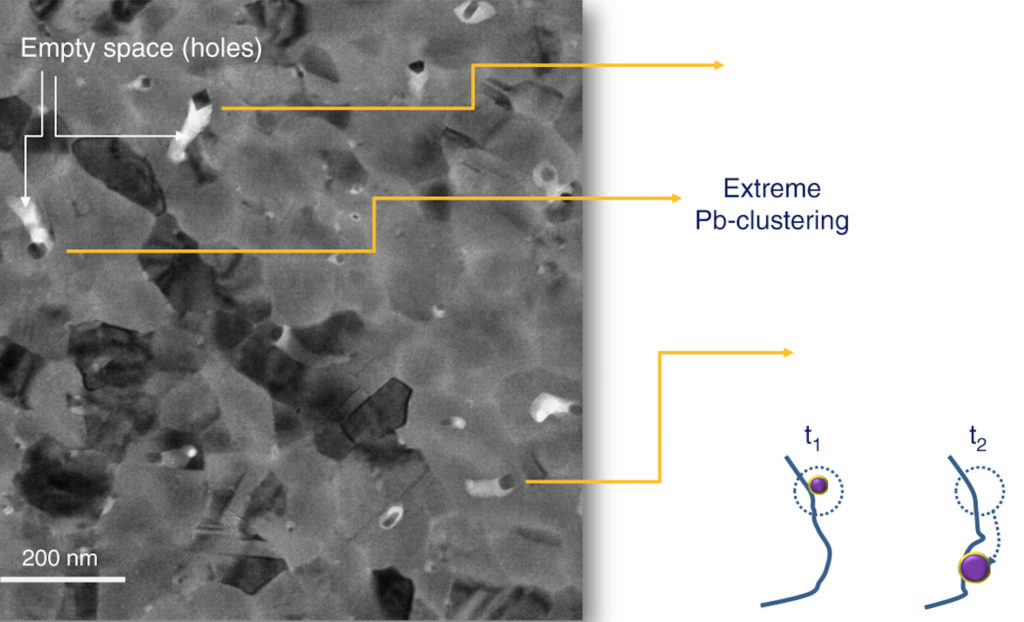
Studying defect formation and evolution in MethylAmmonium lead Iodide (MAPbI3) perovskite layers has a bottleneck in the softness of the matter and in its consequent sensitivity to external solicitations. We have reported that, in a polycrystalline MAPbI3 layer, Pb–related defects aggregate into nanoclusters preferentially at the triple grain boundaries as unveiled by Transmission Electron Microscopy (TEM) analyses at low total electron dose. Pb–clusters are killer against MAPbI3 integrity since they progressively feed up the hosting matrix. This progression is limited by the concomitant but slower transformation of the MAPbI3 core to fragmented and interconnected nano-grains of 6H–PbI2 that are structurally linked to the mother grain as in strain-relaxed heteroepitaxial coupling. The phenomenon occurs more frequently under TEM degradation whilst air degradation is more prone to leave uncorrelated [001]-oriented 2H–PbI2 grains as statistically found by X–Ray Diffraction. This path is kinetically costlier but thermodynamically favoured and is easily activated by catalytic species.
Contact person: Alessandra Alberti, IMM Catania
